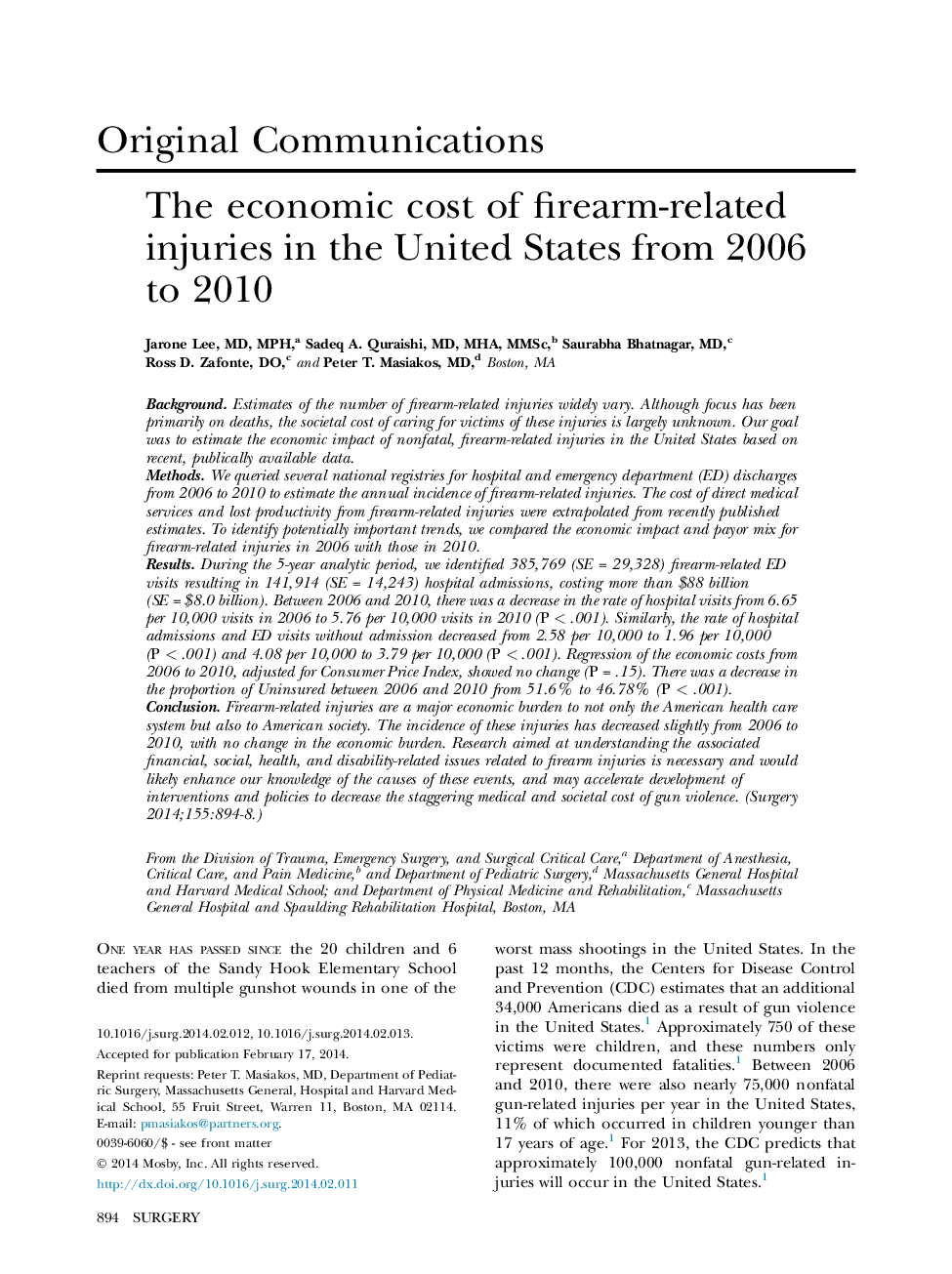| Article ID | Journal | Published Year | Pages | File Type |
|---|---|---|---|---|
| 4306544 | Surgery | 2014 | 5 Pages |
BackgroundEstimates of the number of firearm-related injuries widely vary. Although focus has been primarily on deaths, the societal cost of caring for victims of these injuries is largely unknown. Our goal was to estimate the economic impact of nonfatal, firearm-related injuries in the United States based on recent, publically available data.MethodsWe queried several national registries for hospital and emergency department (ED) discharges from 2006 to 2010 to estimate the annual incidence of firearm-related injuries. The cost of direct medical services and lost productivity from firearm-related injuries were extrapolated from recently published estimates. To identify potentially important trends, we compared the economic impact and payor mix for firearm-related injuries in 2006 with those in 2010.ResultsDuring the 5-year analytic period, we identified 385,769 (SE = 29,328) firearm-related ED visits resulting in 141,914 (SE = 14,243) hospital admissions, costing more than $88 billion (SE = $8.0 billion). Between 2006 and 2010, there was a decrease in the rate of hospital visits from 6.65 per 10,000 visits in 2006 to 5.76 per 10,000 visits in 2010 (P < .001). Similarly, the rate of hospital admissions and ED visits without admission decreased from 2.58 per 10,000 to 1.96 per 10,000 (P < .001) and 4.08 per 10,000 to 3.79 per 10,000 (P < .001). Regression of the economic costs from 2006 to 2010, adjusted for Consumer Price Index, showed no change (P = .15). There was a decrease in the proportion of Uninsured between 2006 and 2010 from 51.6% to 46.78% (P < .001).ConclusionFirearm-related injuries are a major economic burden to not only the American health care system but also to American society. The incidence of these injuries has decreased slightly from 2006 to 2010, with no change in the economic burden. Research aimed at understanding the associated financial, social, health, and disability-related issues related to firearm injuries is necessary and would likely enhance our knowledge of the causes of these events, and may accelerate development of interventions and policies to decrease the staggering medical and societal cost of gun violence.
